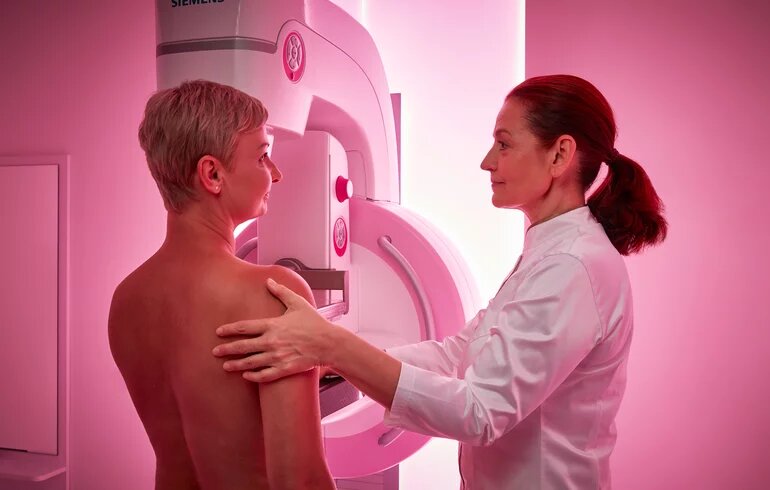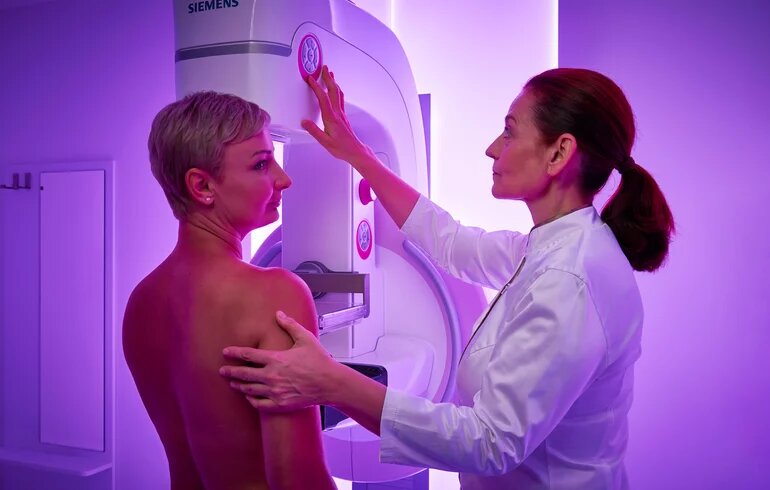Tomosynthesis is a modern breast diagnostic test performed, whenever necessary, during mammography, which helps in the early and more accurate detection of tumors.
Tomosynthesis
During mammography, tomosynthesis may be performed upon the recommendation of a radiologist. This is a modern imaging procedure that provides a three-dimensional image of the breast tissue, allowing for a more accurate diagnosis, especially in cases of dense breast tissue.
From the patient's perspective, the examination process is no different from traditional mammography. What makes it different is the way the images are taken: the x-ray tube describes an arc over the breast, taking a series of images at a 50-degree angle, which the device then divides into 1-millimeter sections. This modern technology makes it easier to identify shadows and formations found during the screening examination. The layered images reduce the possibility of distortion due to overlap, hence tomosynthesis can help isolate truly pathological changes.
It is important to know that tomosynthesis involves a higher radiation dose than traditional mammography, so it is only used when justified. In all cases, traditional mammography images are taken first, which are evaluated by our experienced radiologist. If the images show a discrepancy that requires more precise clarification, the specialist will decide on the need for tomosynthesis. Tomosynthesis may also be justified by dense breast tissue or increased risk factors, such as genetic predisposition or family history. This careful procedure ensures that the examination has the greatest possible diagnostic value and the lowest possible risk for patients.
At Dr. Rose Private Hospital, breast cancer screening is performed with a complex breast diagnostic examination. During the examination, a two-dimensional mammographic x-ray of both breasts is taken, and then the patient is immediately examined by a radiologist experienced in breast diagnostics. The procedure includes taking a detailed family and individual medical history, a physical breast examination, and a breast ultrasound. After comparing the results - depending on the patient's individual condition and risk factors - tomosynthesis may be recommended, as well as other examinations (e.g. biopsy) if necessary.

